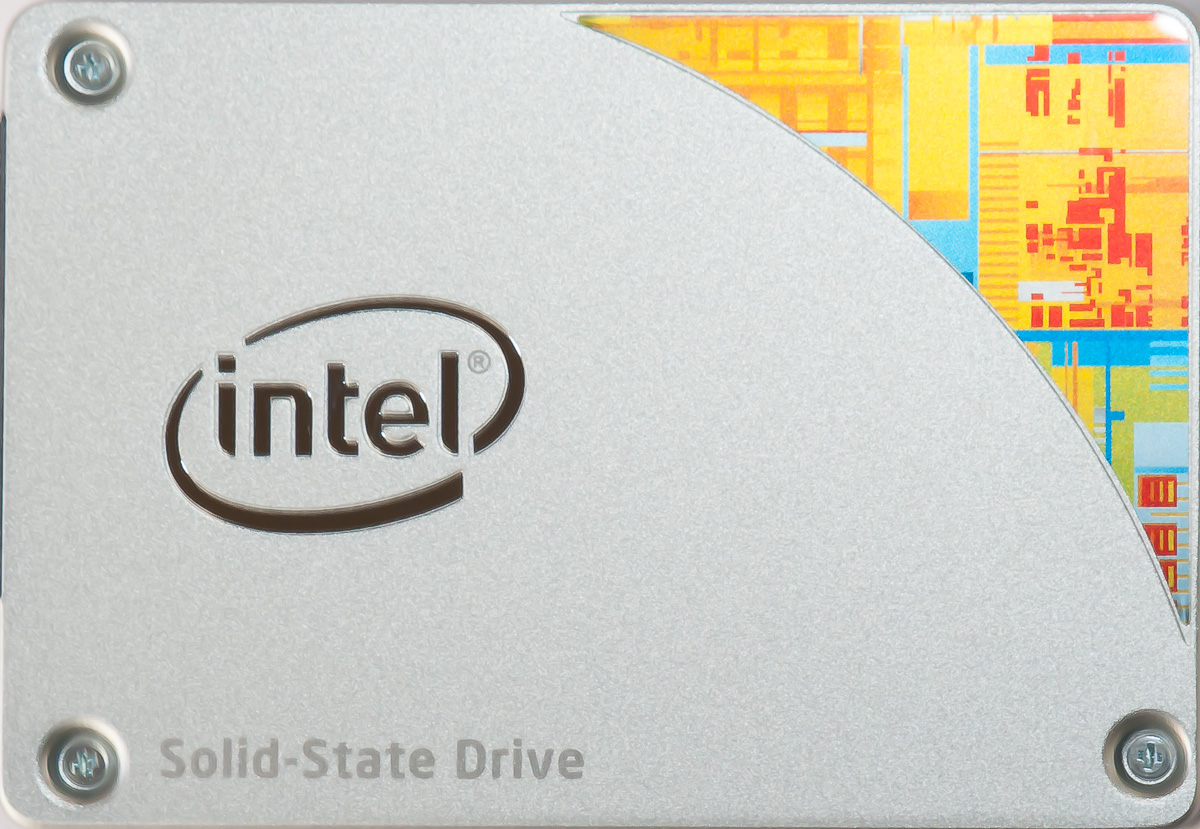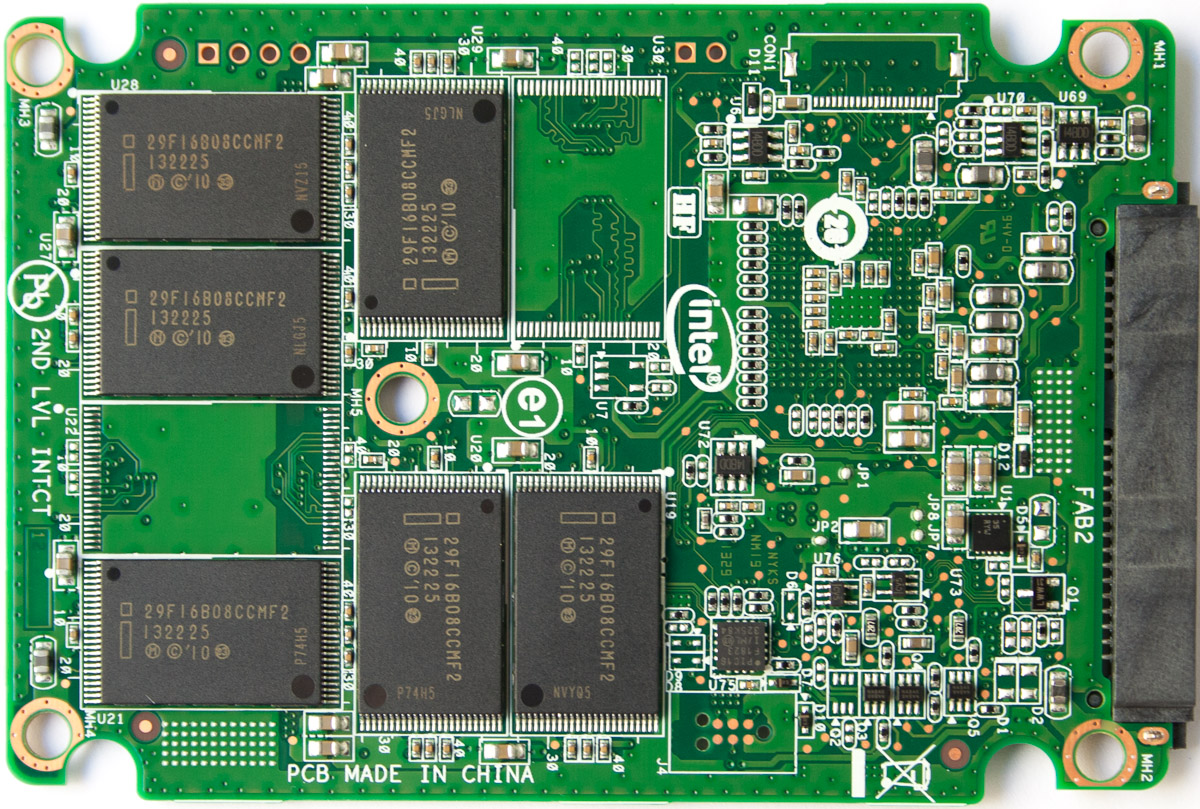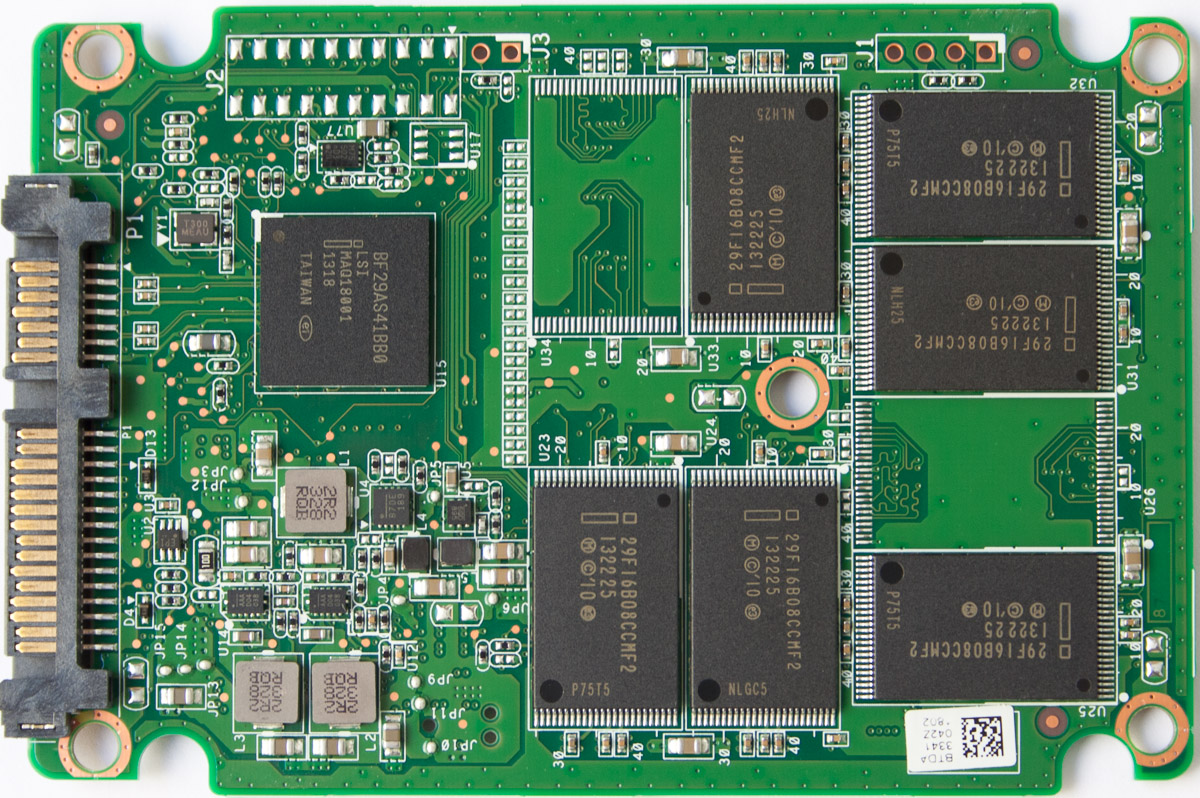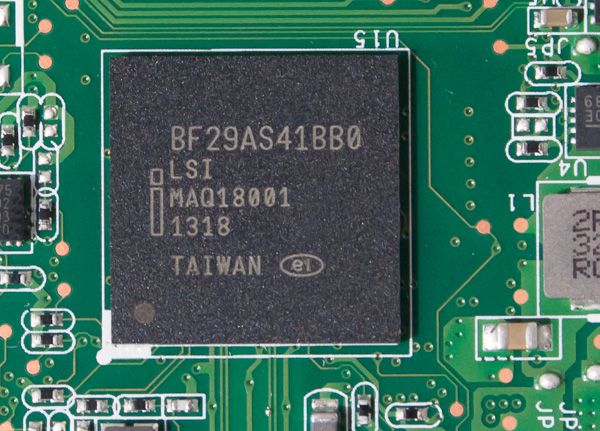Intel SSD 530 Review: A Revised Controller And 20 nm Flash
Intel recently lifted the veil on a replacement for its SSD 520, not surprisingly called the SSD 530. It partners new SandForce silicon with IMFT's 20 nm flash for better power consumption and a more modest price tag. Does the evolution pay off?
Putting Intel's 180 GB SSD 530 To The Test
Intel's decision to move away from its own proprietary SSD controller on the desktop was met with simultaneous excitement and trepidation from enthusiasts. After all, the company's reputation in the storage space was earned with products like the X25-M and X25-E (historically awesome drives, if ever there were any). As the era of 6 Gb/s SATA storage was ushered in by SSDs like Crucial's C300, and hit full stride with controllers from SandForce, it became clear that Intel didn't plan to drop an updated processor to enable the faster interface's peak potential, as it had for SATA 3Gb/s.
After a short-lived stint with Marvell's sweet 88SS9174 controller in its SSD 510 series, Intel flipped the script and ran into SandForce's waiting arms. The first fruit of that admittedly unexpected union, code-named Cherryville, became the SSD 520. And that's pretty much where the story ends.
With Cherryville anchoring the Non Volatile Memory group's desktop-oriented offerings, the next few product introductions were hardly unexpected. After the SSD 520, Intel released its SSD 330, which employed the same basic formula with lower-binned flash and a correspondingly more affordable price tag. Then, the company took its SSD 330, swapped in 20 nm flash in place of its 25 nm NAND, and launched the SSD 335. Throughout, Intel's SSD 520 remained a premium product, priced to reflect that fact. Its SSD 330 and 335 were comparable performers, but with three-year warranties instead of five-year coverage.
Surprisingly, the SSD 525 wasn't the revamped 520 we might have expected. Rather, it was an SSD 520 shrunk to fit the mSATA form factor, armed with new capacity points, and flashed to the latest firmware.
The real SSD 520 successor recently became available in the SSD 530. And unlike the previous generation, Intel's new model number includes 2.5", mSATA, and the M.2 form factor. All told, there are 14 new products sporting SSD 530 naming.
| Intel SSD 530 | |||
|---|---|---|---|
| Capacity | Form Factor | Sequential Read/Write | Random 4 KB Read/Write |
| 80 GB | 2.5", 7 mm | 540 MB/s / 480 MB/s | 24,000 / 80,000 IOPS |
| 120 GB | 2.5", 7 mm | 540 MB/s / 480 MB/s | 24,000 / 80,000 IOPS |
| 180 GB | 2.5", 7 mm | 540 MB/s / 490 MB/s | 41,000 / 80,000 IOPS |
| 240 GB | 2.5", 7 mm | 540 MB/s / 490 MB/s | 41,000 / 80,000 IOPS |
| 360 GB | 2.5", 7 mm | 540 MB/s / 490 MB/s | 45,000 / 80,000 IOPS |
| 480 GB | 2.5", 7 mm | 540 MB/s / 490 MB/s | 48,000 / 80,000 IOPS |
| 80 GB | mSATA | 540 MB/s / 480 MB/s | 24,000 / 80,000 IOPS |
| 120 GB | mSATA | 540 MB/s / 480 MB/s | 24,000 / 80,000 IOPS |
| 180 GB | mSATA | 540 MB/s / 490 MB/s | 41,000 / 80,000 IOPS |
| 240 GB | mSATA | 540 MB/s / 490 MB/s | 41,000 / 80,000 IOPS |
| 80 GB | M.2 2280 | 540 MB/s / 480 MB/s | 24,000 / 80,000 IOPS |
| 120 GB | M.2 2280 | 540 MB/s / 480 MB/s | 24,000 / 80,000 IOPS |
| 180 GB | M.2 2280 | 540 MB/s / 490 MB/s | 41,000 / 80,000 IOPS |
| 360 GB | M.2 2280 | 540 MB/s / 490 MB/s | 41,000 / 80,000 IOPS |
That's a lot of new storage hardware, right? There are six SATA drives, four mSATA models, and four M.2-based offerings. It's unclear whether the forthcoming mSATA-based drives will supplant the SSD 525 series altogether, but that mSATA-only family is made up of six products. The 30 and 60 GB SSD 525s don't have an SSD 530 equivalent, so their futures could be tenuous.
By the end of today, we want to know whether the SSD 530 is an SSD 520 with 20 nm flash or something more. The answer isn't as simple as our question though, so let's dig in.
Get Tom's Hardware's best news and in-depth reviews, straight to your inbox.
Intel SSD 530: Under The Hood
Getting to the SSD 530's insides isn't particularly difficult. Disappointingly, it does require marring the super-fresh sticker, which hides the last screw. Consider it the most attractive warranty seal we've ever seen. With security trappings out of the way, the 180 GB model's PCB is held in place by hope and the drive controller's thermal pad.
Given 180 GB of capacity, we were already expecting six or 12 NAND emplacements, which is exactly how Intel configures this drive. We find 12 packages labeled 29F16B08CCMF2, each packing two 64 Gb dies manufactured at 20 nm. The C (fifth character from the end of the part code) represents dual die packages, whilst the F (next from last alphanumeric) translates to 20 nm. Simple, right?
When I first learned that Intel was designing its mSATA-based SSD 525, I was sure that it would use the revised B02 SandForce controller. It didn't, though. And yet Intel still managed to deliver good power consumption figures. I was even more confident that the SSD 530s would employ the updated processor, and this time I was right (in a manner of speaking).
At least technically, this isn't a SandForce-branded processor. Neither Intel nor LSI would comment on the record, but officially, this is an Intel BF29A41BB0 controller. Underneath all of that fancy cladding is mostly a SandForce 2281 B02-stepping storage processor. The LSI branding underneath Intel's part number indicates that this really is LSI technology, fabbed by TSMC in Taiwan. As for unique tweaks that may exist, nobody is talking. So, I'm not going to call it an Intel BF29AS41BB0 when it's most easily recognizable as a SandForce controller.
There are some new features, though performance falls in line with what you'd expect (assuming you were expecting numbers similar to every other drive with a SandForce controller). The new stepping really emphasizes power consumption, adding not only support for the DevSleep initiative on supported platforms, but incorporating lower active idle power use, too. Otherwise, the most influential capabilities are reserved for SandForce's next-gen controller.
That's the long and short of it. Intel's SSD 530 is predominantly a 520 with updated bits and pieces, and therefore two other drives spring to mind as we look around the lab for hardware to test against: the original SSD 520 and the mSATA-based SSD 525, both also at 180 GB.
Current page: Putting Intel's 180 GB SSD 530 To The Test
Next Page Inside The Box, Test Setup, And Benchmarks-
jimmysmitty I went with a 520 for the fact that Intel has some of the best reliability along with Samsung.Reply
As well we wont see much of a difference in performance until SATA Express (8Gb/16Gb) and even then we might not notice it.
The main benefit is lowering the price. If it sells for $170 that's a bit lower than $1/GB which is good since Intel is always a bit pricier than others. -
cryan Reply11835302 said:I went with a 520 for the fact that Intel has some of the best reliability along with Samsung.
As well we wont see much of a difference in performance until SATA Express (8Gb/16Gb) and even then we might not notice it.
The main benefit is lowering the price. If it sells for $170 that's a bit lower than $1/GB which is good since Intel is always a bit pricier than others.
I can't, in good conscience, recommend anyone actually buy the 180 GB 530 -- not when the retail boxed 240 GB is only $198.
Jay Crest (the 335) is a few bucks less, and its 240 GB edition is hovering near $180. Nice, but for just $20 more, grab the 530 240 GB box and call it a day... if for no other reason than the extra warranty coverage.
Regards,
Christopher Ryan
-
RealBeast I got a 480GB 520 a year ago on a great sale with the typical Intel rebate. Great drive. I'm hoping to see a nice rebate again this year as I need a number of drives.Reply -
diazalon Where i am the 840 pro is cheaper so i think i will just get that, seems to perform pretty well tooReply -
ssdpro The compressed vs incompressible data issue is still a problem for me with LSI/SandForce controllers. I need consistent data transfer and get that with my 840 Pro and Vector drives. With so many options I boil it down to 3 considerations: 1) Is data transfer consistent across data types and as fast as possible, 2) are there reasonable tools available from the manufacturer for examining drive condition, 3) how is the warranty and support in the event of the failure. The Intel 520/530 offering fails point 1 where Samsung 840 Pro and OCZ Vector excel. Intel, Samsung, and OCZ pass point 2. OCZ wins point 3 easily. They have active support forums and mostly reasonable support staff. Intel has decent process, OCZ has decent process. Samsung has horrid and lengthy support procedures. If you visit Samsung.com to initiate a support request I bet you can't even find your Evo or Pro on the drop down menu you MUST use. You have to call and wait on hold endlessly.Reply -
vertexx Thanks for the informative article - would have liked to see a couple different capacities tested.Reply
If you look at the number of models and form-factors available for the 530, I'd say this product line is primarily about one thing: Distribution.
The price points for the 240-256GB capacity drives have come down enough where they're probably ready for the mainstream. You see this with Samsung's aggressive (and cheesy) marketing of it's EVO line to the mass consumer market, and this is Intel's attempt to achieve maximum penetration into that market.
About two months ago, I refreshed my 2-year-old primary work laptop with the Intel 335 240GB. It was on a special at Newegg for $50 off at $170. Now that same drive lists for $180. For a work PC, I was waiting for SSD affordability in the 240-256GB range before pulling the trigger, as anything less would lead to too much hassle moving files around between drives. So, I upgraded from a single 500GB HDD that was getting slower by the day to a 240GB SSD for my primary and a new 750GB secondary HDD running in a caddy in the ODD bay. With this upgrade, I believe I'm set for the next couple of years with this laptop, given the lower pace of development for core CPU tech.
Overall I'd say that the 530 performance numbers in this article are disappointing, although low power consumption certainly is valuable for the laptop market. Still, I think the market expects performance improvement along with power efficiency improvement, even though reality is you probably wouldn't notice the difference in everyday use.
It would have been good to see the performance numbers for the 240GB drive, as that really is the minimum point where you could reasonably get away with running a SSD as your sole system drive. With the prices coming down at that capacity, there certainly is a point in marketing SSD affordability in the mainstream segment.
The other main selling point for me was reliability. Samsung leads the pack here with Intel not far behind. I passed over the Sandisk Ultra Plus 256GB recommended in Tom's "Best SSD's for the $$" due to a high percentage of 1-star ratings on Newegg and only 2-year warranty. It came down to the 335 and the 840 Evo, with the Evo having slightly better performance and the 335 at that point being about $30 cheaper with the Newegg Promo. I went with the lower price and the rest is history.
For those contemplating upgrading to a consumer grade SSD, don't sweat the minor performance differences. Go with a good brand and a line with good reliability ratings. Do the hard work of re-installing a fresh copy of Windows (instead of using a migration utility), and your system will be flying. I couldn't be happier with this upgrade.
-
npyrhone I think this is the least exciting SSD release this year. I really challenge you to find a major SSD release this year that showed less. 530 is relatively expensive and on the slow side. It excels in nothing.Reply
Intel's post x-25 SSDs' only claim for fame is "reliability" which is nothing but a mantra. Intel's SSD are no more or less reliable than any other manufacturer's. They do give a five-year warranty, true, but it means nothing. They break down just as often as others do, and because of this, Intel pays a bit more by sending replacement drives. This is small potatoes, a minute cost to pay to be considered "more reliable" by those less informed. Especially since the warranty does not cover all the hassle and expenses that come from actually replacing the broken drive (you must stop working, start waiting, install the new drive, move all the data, etc). Of course its nice to live in the beautiful illusion that by buying an Intel SSD I am more safe from all this.
I would never buy this over a Samsung-product that is less expensive, has greater performance and equal reliability. I can't understand why this article concludes like it does. It should say: "There is nothing wrong with 530, but you can get better for cheaper, so stay away from 530." -
cryan The 530 and the newly announced 1500 Pro are both about filling out the gaps in client computing. Both are nearly identical, with wide varieties of form factors and capacity points.Reply
Regards,
Christopher Ryan
-
npyrhone Cristopher: Is there a single metric that would support the decision for anyone to fill that gap with an Intel 530 product, rather than with a Sandisk Ultra Plus product, or Samsung 830 840 (EVO) product?Reply





